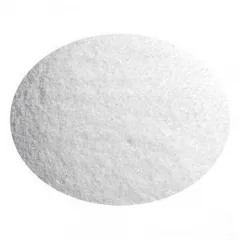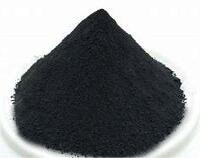1. Introduction
In the past 48 hours, a major aerospace manufacturer announced a breakthrough in large-scale titanium 3D printing using gas-atomized Ti6Al4V powder, reigniting industry-wide interest in the safety, sourcing, and cost-efficiency of titanium powder for additive manufacturing. As demand surges, professionals—from engineers to hobbyists—are asking: how do you actually work with titanium powder safely and effectively?

Whether you’re exploring titanium powder for 3D printing, metallurgy, or coatings, understanding its properties, risks, and best practices is essential. This guide gives you actionable steps to handle, store, select, and use titanium powder—without cutting corners on safety or performance.
2. Understanding Titanium Powder Variants
Not all titanium powders are the same. Choosing the right type depends on your application:
- Pure titanium powder: Ideal for biocompatible implants and corrosion-resistant parts.
- Ti6Al4v powder (also called Ti64 powder): The most common titanium alloy powder, widely used in aerospace and medical 3D printing.
- Spherical titanium powder: Produced via gas atomization; optimal flowability for laser powder bed fusion.
- HDH titanium powder: Made by hydride-dehydride process; angular particles, lower cost, but less suitable for high-precision AM.
- Specialty powders: Includes titanium nitride powder, titanium carbide powder, titanium diboride (TiB2) powder, and titanium nanopowder—used in cutting tools, wear-resistant coatings, and advanced ceramics.
Note: Avoid confusing titanium metal powder with TiO2 powder (titanium dioxide), which is a white pigment used in cosmetics and sunscreens—not for structural applications.
3. Step-by-Step: Safe Handling of Titanium Powder
Titanium powder—especially fine or nano-sized—is flammable and can be pyrophoric under certain conditions. Follow these steps:

3.1. Wear Proper PPE
Always use nitrile gloves, safety goggles, and an N95 respirator or better. Titanium dust inhalation poses respiratory risks.
3.2. Work in a Controlled Environment
Use a fume hood or inert atmosphere glovebox when handling fine powders. Keep away from open flames, sparks, or static electricity.
3.3. Ground All Equipment
Static discharge can ignite titanium powder. Ground containers, scoops, and printers before use.

3.4. Never Mix with Oxidizers
Avoid combining titanium powder with chlorates, nitrates, or peroxides—this can create explosive mixtures (e.g., titanium flash powder).
4. Storage Best Practices
Store titanium powder in sealed, airtight containers under argon or nitrogen. Keep in a cool, dry place away from direct sunlight. Label clearly with hazard warnings. For long-term storage, consider vacuum-sealed bags inside metal cabinets.
5. Sourcing and Pricing Guide
When you buy titanium powder, price varies dramatically by type, purity, and morphology:
- Titanium powder price per kg ranges from $80–$300+ for standard grades.
- Ti6Al4V powder price typically falls between $150–$400/kg, depending on sphericity and oxygen content.
- 3D printing titanium powder price is higher for gas-atomized, low-oxygen spherical grades used in aerospace.
Reputable titanium powder suppliers include international titanium powder producers like AP&C (now part of GE Additive), TLS Technik, and Carpenter Additive. Always request certificates of analysis (CoA) for oxygen, nitrogen, and particle size distribution.
Compare titanium powder cost against alternatives like molybdenum powder or tungsten powder if your application allows—but note their different densities, melting points, and uses. For example, molybdenum disulfide powder (MoS2) is a dry lubricant, not a structural metal.
6. Common Mistakes to Avoid
- Using burnt titanium powder coat residues in recycling—these may contain oxides that compromise print quality.
- Assuming all ‘titanium powder for sale’ is suitable for 3D printing—only spherical, low-oxygen grades work reliably in AM.
- Confusing titanium diboride price trends with pure titanium metal powder price—they serve entirely different markets.
- Storing titanium powder near tungsten carbide powder or moly powder without segregation—cross-contamination affects sintering behavior.
7. Applications Beyond 3D Printing
While titanium powder for 3d printing dominates headlines, other uses include:
- Titanium coated diamond powder for grinding tools.
- TiO2 nano powder in photocatalysts and UV-blocking coatings.
- Titanium boride powder in neutron absorbers and refractory composites.
- Tih2 powder (titanium hydride) as a foaming agent in metal foams.
Remember: titanium powder uses span defense, energy, biomedical, and even pyrotechnics—but always match the powder form to the function.
8. Conclusion
Working with titanium powder demands respect for its reactivity, but with proper handling, storage, and sourcing, it unlocks incredible potential—especially in additive manufacturing. Whether you’re evaluating titanium powder price per kg or comparing ti powder vs. tungsten metal powder for a specific project, prioritize safety, verify supplier credentials, and choose the right grade for your needs. With the right approach, titanium powder remains one of the most versatile advanced materials in modern engineering.
Our Website founded on October 17, 2012, is a high-tech enterprise committed to the research and development, production, processing, sales and technical services of ceramic relative materials such as How. Our products includes but not limited to Boron Carbide Ceramic Products, Boron Nitride Ceramic Products, Silicon Carbide Ceramic Products, Silicon Nitride Ceramic Products, Zirconium Dioxide Ceramic Products, etc. If you are interested, please feel free to contact us.
